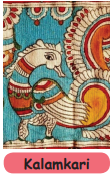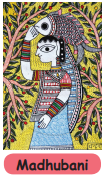Advertisements
Advertisements
Question
How does Tagore acknowledge Gandhi’s noble work?
Solution
Tagore acknowledges the noble work of Gandhi in his poem. He appreciates the moral courage he had instilled in Indians to suffer at his will. He appreciates the faith of love, faith of life in death, of the victory in defeat, of the power hidden in the frailness of beauty, and of the dignity of pain that accepts hurt but disdains to return it.
APPEARS IN
RELATED QUESTIONS
Orangutans use big leaves during a downpour because
Mention the way in which the sparrows expressed their sorrow when the author’s grandmother died.
What impression would you form of a state where the King was 'just and placid'?
What do you understand of the three voices in response to the question 'What does a novel do' ?
' Kummi', ' ghumar' and 'dandia' are some dance forms mentioned in the text. Make an inventory of folk dance forms in the different regions of the country.
What decision taken by Dick changed his fortune?
Read the story and complete the following.
Revathi’s grief knew no bounds because, ____________.
Add the appropriate Prefix to make the following word opposite in meaning.
continue
Visit a library:
Read more stories from Japan, China, and Korea.
List the phrases that indicate sorrow or pain.
Answer the following question and write in short, why the parody sounds funny.
What does the bee stand for?
Using the information given in the passage, write a short note on the following in your mother tongue.
Gond art
Read the poem aloud using proper intonation.
What examples of plentiful things does the poet give?
Read the following and say whether the statement tells you about a fact or whether it is imaginary.
There is a man in the Moon.
Look at the following situations the writer was in. He could have avoided the situation and saved himself. Glance through the write up again and comment on what the writer should have done in the following situations.
- Gilson asked the writer to bring a tie.
- On the day of arrival, the writer had no time to think about the tie.
- The writer remembered about the tie when the bus was leaving for the airport.
- The writer walked down in search of the shop.
- The writer rushed out with the tie in a paper bag.
How did Hamid’s friends enjoy the games in the fair?
Give a picturesque view through which the train travels.
There is a connection between the rhyming words and rhythms of the train. Present your views about it.
The girl admitted to her brother that she was badly frightened.
Where did the space shuttle land?
Find the rhyming word from the poem.
alike – _________
Vicky's father bought a______ robot
Who showed love and care to the children?
Read the advertisement and answer the question given below.

When does the offer end?
Write a paragraph on the topic ‘Park’.
What should we vow for?
Join the word with the correct prefix.
| paid | un |
| send | dis |
| able | re |
| continue | pre |


Bihar people saved trees by______ painting.
On the basis of your understanding of the given passage, make notes in any appropriate format.
The Sherpas were nomadic people who first migrated from Tibet approximately 600 years ago, through the Nangpa La pass and settled in the Solukhumbu District, Nepal. These nomadic people then gradually moved westward along salt trade routes. During 14th century, Sherpa ancestors migrated from Kham. The group of people from the Kham region, east of Tibet, was called “Shyar Khamba”. The inhabitants of Shyar Khamba, were called Sherpa. Sherpa migrants travelled through Ü and Tsang, before crossing the Himalayas. According to Sherpa oral history, four groups migrated out of Solukhumbu at different times, giving rise to the four fundamental Sherpa clans: Minyagpa, Thimmi, Sertawa and Chawa. These four groups have since split into the more than 20 different clans that exist today
Sherpas had little contact with the world beyond the mountains and they spoke their own language. AngDawa, a 76-year-old former mountaineer recalled “My first expedition was to Makalu [the world’s fifth highest mountain] with Sir Edmund Hillary’’. We were not allowed to go to the top. We wore leather boots that got really heavy when wet, and we only got a little salary, but we danced the Sherpa dance, and we were able to buy firewood and make campfires, and we spent a lot of the time dancing and singing and drinking. Today Sherpas get good pay and good equipment, but they don’t have good entertainment. My one regret is that I never got to the top of Everest. I got to the South Summit, but I never got a chance to go for the top.
The transformation began when the Sherpa Tenzing Norgay and the New Zealander Edmund Hillary scaled Everest in 1953. Edmund Hillary took efforts to build schools and health clinics to raise the living standards of the Sherpas. Thus life in Khumbu improved due to the efforts taken by Edmund Hillary and hence he was known as ‘Sherpa King’.
Sherpas working on the Everest generally tend to perish one by one, casualties of crevasse falls, avalanches, and altitude sickness. Some have simply disappeared on the mountain, never to be seen again. Apart from the bad seasons in 1922, 1970 and 2014 they do not die en masse. Sherpas carry the heaviest loads and pay the highest prices on the world’s tallest mountain. In some ways, Sherpas have benefited from the commercialization of the Everest more than any group, earning income from thousands of climbers and trekkers drawn to the mountain. While interest in climbing Everest grew gradually over the decades after the first ascent, it wasn’t until the 1990s that the economic motives of commercial guiding on Everest began. This leads to eclipse the amateur impetus of traditional mountaineering. Climbers looked after each other for the love of adventure and “the brotherhood of the rope” now are tending to mountain businesses. Sherpas have taken up jobs as guides to look after clients for a salary. Commercial guiding agencies promised any reasonably fit person a shot at Everest.
